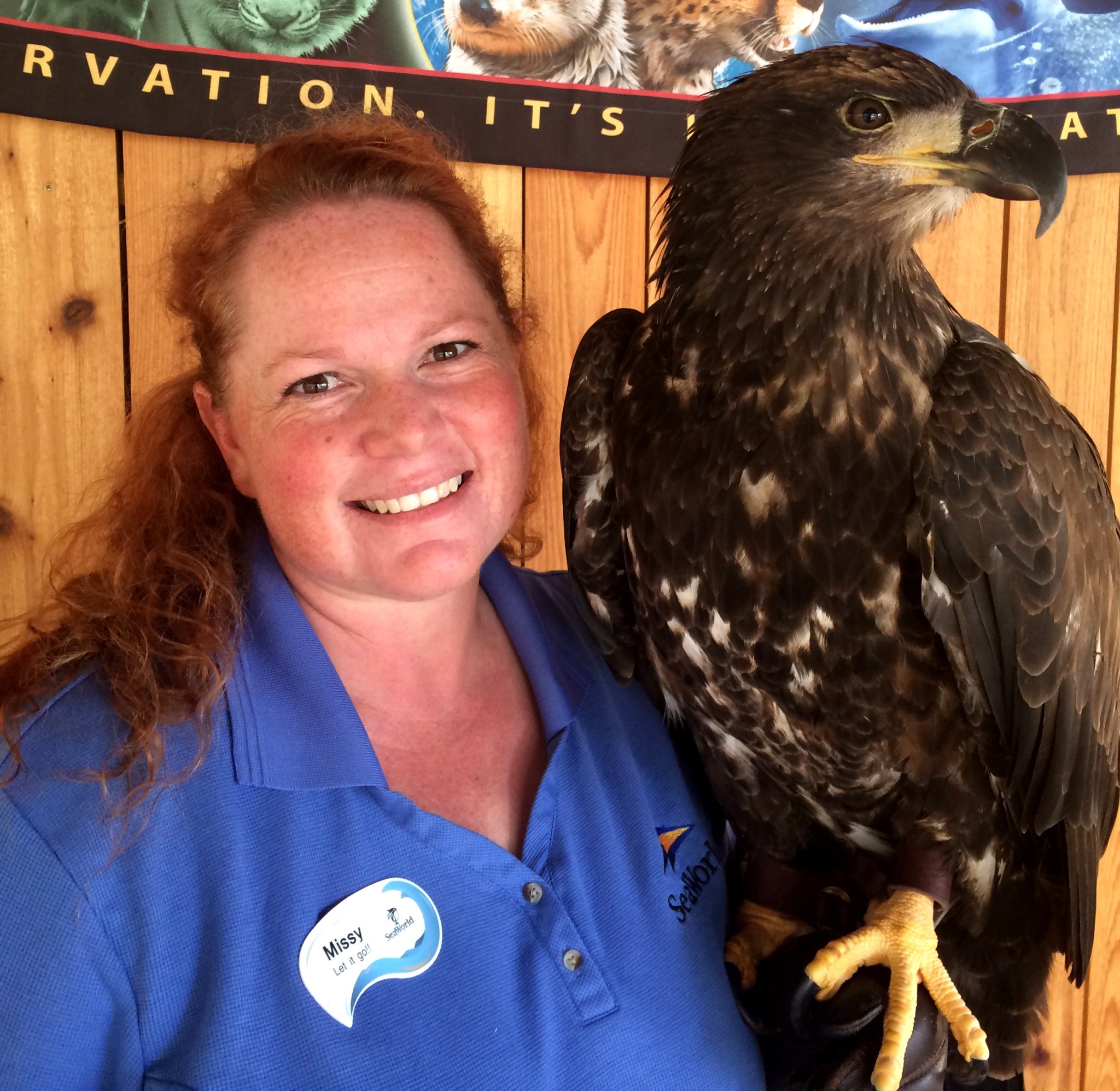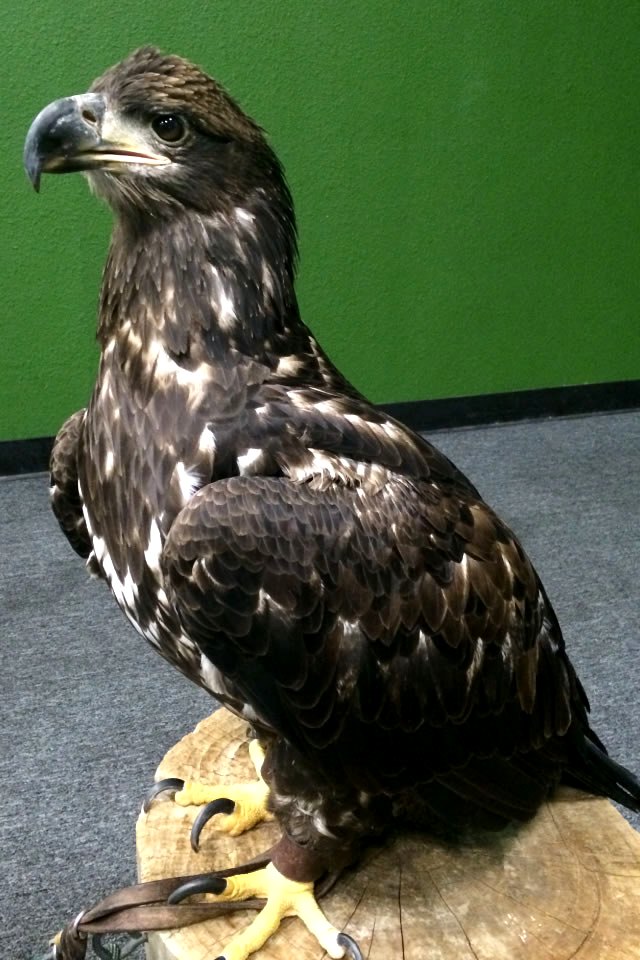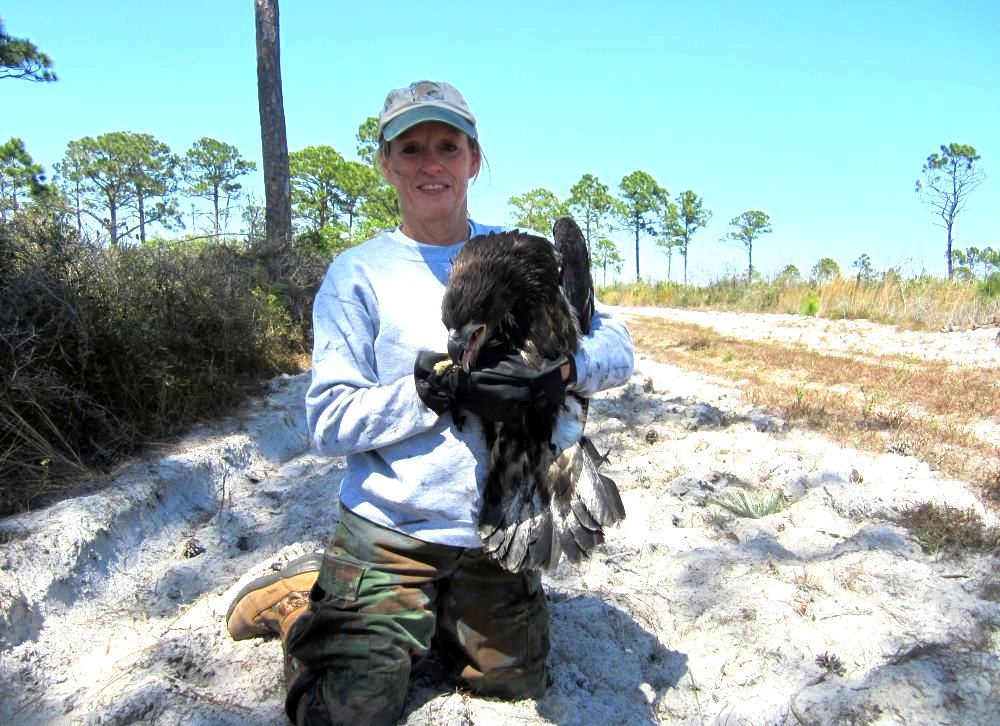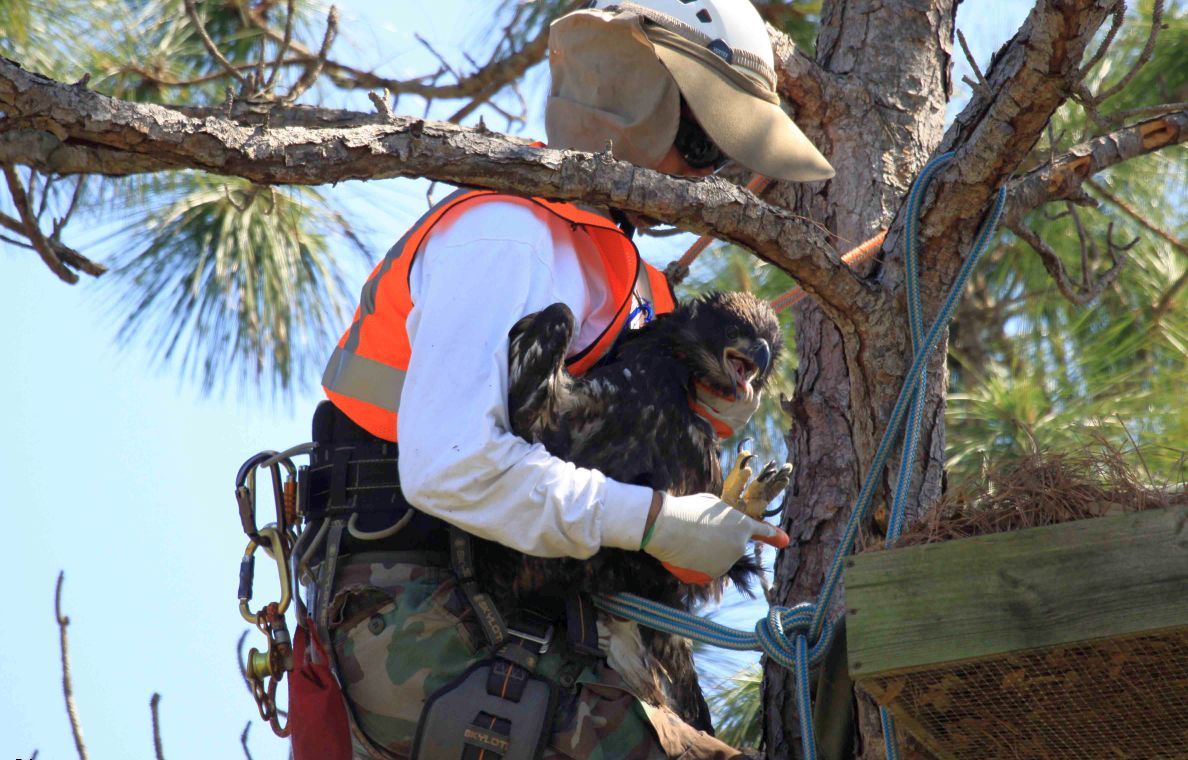A nesting bald eagle, blown from its nest during a storm that passed through NASA’s Kennedy Space Center in early 2013, now is the star of an educational program at a theme park in San Antonio, Texas. One of the ecologists who rescued the bird recently visited the site where the eagle is part of a program that is delighting guests of all ages.
“She is incredible, very large, a good learner and has a nice temperament,” said Becky Bolt, a wildlife ecologist with InoMedic Health Applications Inc. (IHA). “Her trainers absolutely adore her.”
When a thunderstorm passed through the Space Coast on the afternoon of March 24, 2013, it pounded the area with heavy rain, hail and winds exceeding 60 miles per hour. Two eaglets were blown to the ground along with their nest. Fortunately, ecologists at Kennedy stepped in and rescued them.
With assistance from the Merritt Island National Wildlife Refuge, both birds were collected and taken to the Audubon Center for Birds of Prey in Maitland, Florida. The center provides medical treatment, rehabilitation and release of Florida’s raptors.
Two days after the rescue, one eaglet was returned to the area where he was found. The bird was placed in a nest box, built by wildlife experts, with a wooden frame, wire mesh in the bottom and filled with twigs and straw. He was fed and raised by his parents and fledged (ready to fly) three weeks later.
The second eaglet remained at the Audubon Center where treatment continued for an eye problem. It was found that she had clear vision in only one eye.
“The veterinarians at Audubon determined that the eagle could not survive in the wild with only one good eye,” Bolt said. “She was given to SeaWorld in Orlando to be trained for educational programs.”
Eight months later, the eagle was sent to SeaWorld in San Antonio. According to their website, “Guests are often surprised to be greeted by one of our many animal ambassadors, many of whom were orphaned or injured in the wild and given a second chance thanks to our SeaWorld Rescue Team.”
The SeaWorld animal encounters now include what is described as the “grace and nobility of the magnificent eagle.”
During her recent visit to San Antonio, Bolt noted that wildlife conservation experts at the Texas SeaWorld named the eagle “Star.”
“For many people, this may be their only opportunity to see an eagle up-close,” she said. “Kids, especially, enjoy seeing the bird one-on-one.”
During the educational presentations, guests learn that bald eagles do not gain the distinctive white feathers on their heads until they are about five years old. The average weight of an adult female bald eagle is 10 to 14 pounds. In captivity, eagles are known to live up to 50 years, due to a controlled environment, nutrient-rich diet and veterinary care.
Bolt explained that “Star” is still “only a baby.”
“She is 16 months old and weighs about nine pounds,” she said. “Even so, she is a big bird and people love seeing her. Now they will hear her story and gain a better appreciation for eagles.”
For more on the eaglet rescue at the Kennedy Space Center, visit: https://www.nasa.gov/centers/kennedy/about/sustainability/eagles_rescued.html
































